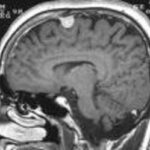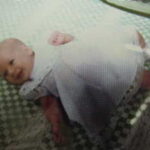In youth, a variety of causes can precipitate seizures. This happens often enough that approximately 3% of children have a seizure before the age of 15. Severity of the seizures, including the cause, can help determine the type of treatment that is necessary. While the majority of seizures in children are caused by fever (febrile seizures), approximately 1% of children have recurring seizures, known as epilepsy. Understanding the causes of seizures in children, as well as the types of childhood seizures, can help parents understand the type of treatment that may be most effective for their child.
CAUSES OF SEIZURES IN CHILDREN
Seizures are caused by an abnormal electrical response in the brain, which results in some change of awareness or ability to control physical movement. While there are specific disorders which result in seizures, approximately 75% of children who have seizures have them for unknown reasons. Potential reasons for seizures include: infections, reactions to drugs or medications, metabolic issues, and bleeding inside the brain. Because there are so many potential causes for seizures, family history can also play a contributing role. If there is a history of seizures in the child’s family, there is usually a shared cause. However, meningitis or early childhood developmental problems can also cause seizures.
In many cases, the seizures lessen in frequency and severity by the time a child hits puberty; however, a doctor should be immediately consulted to try to determine the cause as soon as possible.
TYPES OF SEIZURES IN CHILDREN
There are two primary types of childhood seizures: febrile seizures and epileptic seizures. Febrile seizures are seizures brought on by fever, and are usually caused by an infection. They are the most common type of seizure, and 2-5% of children experience a febrile seizure at some point during childhood. Epilepsy refers to a pattern of multiple seizures over a duration of time, but only 30% of children diagnosed with epilepsy continue to have seizures into adulthood.
Both types of seizures can be localized (affecting only one part of the body), or they can affect the entire body. This depends on the area of the brain in which the abnormal activity occurs, and they are also referred to as “partial” or “general” seizures. Seizures are more common in children whose siblings have also experienced seizures, as are children who spent more than 28 days in a neonatal intensive care unit. Additionally, 25% of children who have experienced a seizure in the past year experience another, usually within one year.
Seizures can certainly be a scary occurrence for parents and do require immediate medical attention. However, because there are a variety of causes, parents can also take heart that it is not necessarily a chronic problem, and there could be a simple explanation, such as infection, that will decrease the likelihood of seizures in the future.
Source: “Seizures in Children.” E-medicine. http://www.emedicinehealth.com/seizures_in_children/article_em.htm#Seizures%20in%20Children%20Overview. Accessed 17 January 2010.



